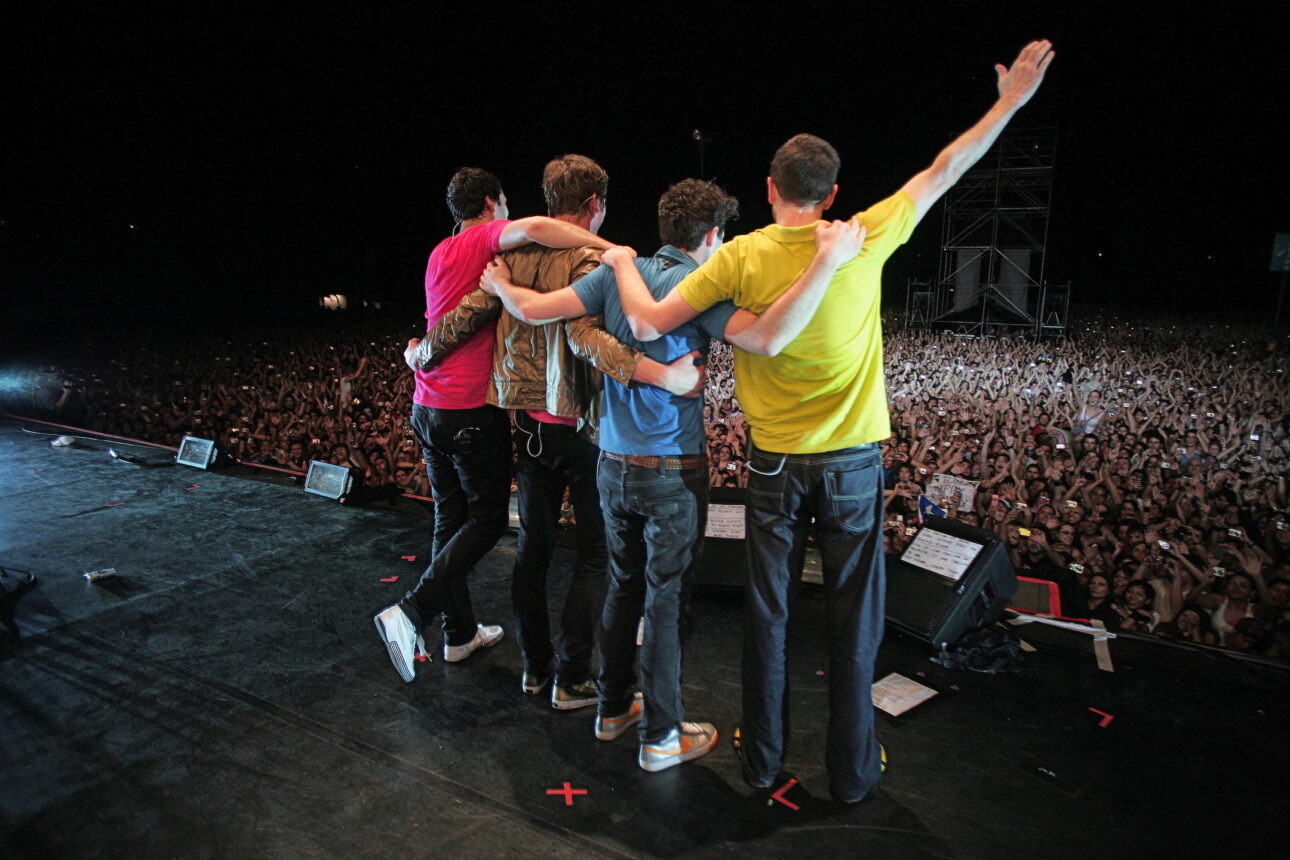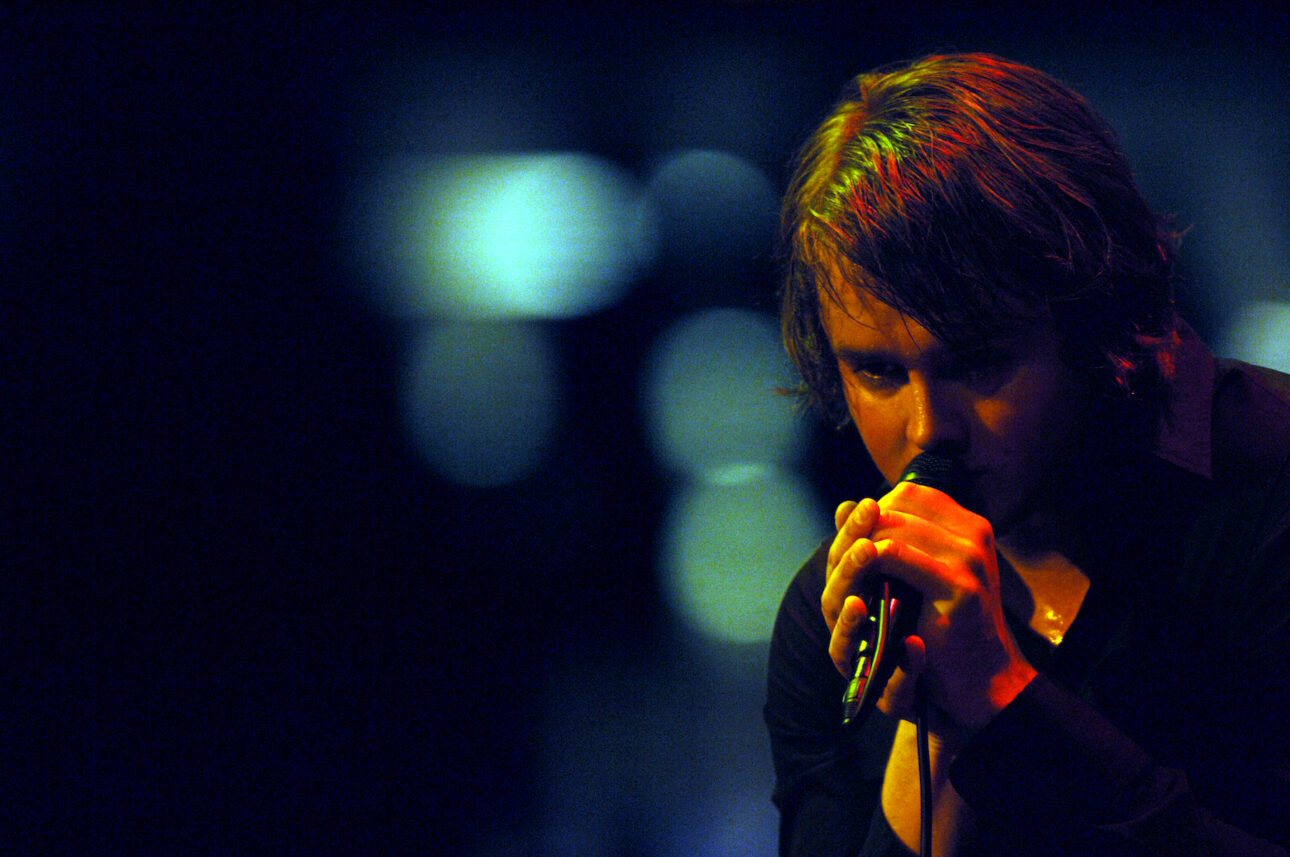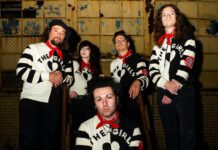
“It’s a very rainy summer in the U.K.,” Tom Chaplin tells me, as he sits on a couch in his home studio in Kent, England.
I’m talking with Chaplin—the frontman for Keane—about Hopes and Fears 20, the recent 20th-anniversary reissue of the band’s debut album. After we exchange pleasantries, I ask him about his lifelong friendship with bandmate and lead songwriter Tim Rice-Oxley.
More from Spin:
- Watch Coldplay’s Chris Martin Backup Lily Allen on ‘The Fear’
- Keane, ‘Strangeland’ (Island/Interscope)
- LISTEN: Keane Side-Project Mt. Desolation
He tells me my question reminds him of something Bruce Springsteen once said in response to the question, “Which great songs do you wish you had written?” Chaplin says Springsteen mentioned Bob Dylan’s “Like a Rolling Stone” as one of many. But what Chaplin found interesting was what Springsteen said after. “He said, ‘Of course, regardless of whether I’ve written it, that’s one thing. But to inhabit the song is an entirely different thing.’”
Chaplin scratches his short silver hair before continuing. “I suppose, that is another layer that makes a song great. And I suppose…it made me realize that really—and I suppose I’ve always known this—at the heart of Keane has always been this sort of axis of Tim’s writing and me then inhabiting the songs… I think in many ways our friendship and our shared history is central to making that dynamic work.”
Chaplin and Rice-Oxley grew up within minutes of each other in East Sussex, England. Chaplin’s parents were friends with Rice-Oxley’s parents, who are also Chaplin’s godparents. And Rice-Oxley’s younger brother’s name is also Tom. “We are linked, first and foremost, by that history and by those early years of friendship,” Chaplin tells me.
Like many kids in the late 1980s and early ‘90s, they both fell in love with pop music, which bound them even closer together. Almost three years his senior, Chaplin looked up to Rice-Oxley. “I think that had its own special energy in the early years,” he says. “But I think as time went on, maybe that was also part of what jeopardized our friendship, you know? I think I put a lot of emphasis or a lot of weight on Tim’s judgment of me. And there were parts of myself I think I hid from him as a result of that.”

Hopes and Fears was released on May 10, 2004, catapulting the group to superstardom. The album sold more than 2.5 million copies in the U.K. within a year, making Keane the biggest-selling British artist in the U.K. at the time. The album’s first single, “Somewhere Only We Know,” spent 12 weeks on the Billboard Hot 100 and is Keane’s biggest hit single to date. “Everybody’s Changing,” the second single from Hopes and Fears, was a U.K. top-five hit and a fan favorite. Since then, the album has sold more than 10 million copies worldwide.
Though Keane’s melodic, keyboard-heavy pop sound was inspired partly by U2’s musical reinvention in the 1990s with albums such as Achtung Baby, Zooropa, and Pop, it was bands like Blur, Coldplay, and Oasis—part of a new wave of British alternative rock called Britpop—that convinced them they could make it as a group, that they could attain some level of notoriety. Chaplin remembers The Beatles Anthology being a huge influence on the band in those early days. “We loved the idea that you could just be four mates who could take on the world and, in the Beatles’ case, change the world, change the cultural conversation, and do something that was genuinely profound.”
Of course, Chaplin admits, he would be lying if he didn’t say that fame, fortune, and girls weren’t part of the equation. But mostly, he says, it was Keane’s artistic desire that drove them to success.
“I think to the outside world, it looked like we’d suddenly appeared out of nowhere and sort of fully formed,” he says. “We had these great songs and this great record. And the truth of it really is not that at all. It took us a long time to get a record deal to break out of that world of playing small clubs and gigs. But we really had to learn our craft. And obviously, in those days, it was very different. The information available to you and the technology available to you, it didn’t really allow you to progress at the same speed that I think a lot of artists can do nowadays.”
Before Keane was Keane, the band was called the Lotus Eaters. While attending University College London in 1995, keyboardist Rice-Oxley formed the group with guitarist Dominic Scott and drummer Richard Hughes, playing mostly cover songs. After Chaplin joined in ‘97, the band changed its name to Keane. As their youngest member, Chaplin had only been enrolled in university briefly before dropping out and moving into a house with Rice-Oxley, Scott, and Hughes in North London, where they played the Camden scene while writing songs and working temp jobs. It was during this two-year period that Keane began to find their sound, along with the first emergence of Hopes and Fears.
“During those two years that we were in London, so ‘99, ‘2000, ‘2001…some of the songs that ended up on Hopes and Fears started to appear,” Chaplin tells me. “So a song called ‘This is the Last Time,’ ‘She Has No Time,’ ‘Bedshaped’ maybe even towards the end of that time,…because we knew, ‘Oh, hang on, these songs are of a different level.’ Suddenly, we were spending much more time working on those tracks, and the dynamics were beginning to make sense in terms of the structure of the band.”
Seeing potential in the band, Grammy-winning producer James Sanger invited Keane to spend the summer of 2001 at his farmhouse in France to help them develop their songs. It was there that Scott left the band to pursue his studies at the London School of Economics and Political Science, eventually to be replaced by guitarist Jesse Quin in 2011. Rice-Oxley, who had been on bass, moved to the piano.
“At that point, our guitarist, Dominic, left the band,” Chaplin says. “So it was just the three of us. It was like, ‘How in the hell are we going to make this work?’ So Tim moved to play the piano, and then obviously that made a very significant difference to the sound of Keane… and at the same time, Tim just hit a real purple patch with the songwriting.”

The trio moved back to their childhood homes somewhere around 2002 or 2003, notes Chaplin, which allowed them to focus more on what would become Hopes and Fears. “So suddenly, we got played on the radio and had loads of record-label interest, and the rest is history,” he says. “Hopes and Fears is really the culmination of a sort of voyage of discovery, as I suppose a lot of first albums are.”
Chaplin remembers the band feeling a sense of relief with its sudden, newfound success, that all those years of toil and disappointment were not for nothing. The success of Hopes and Fears, in Chaplin’s words, “was a slingshot into the sort of A-list world of music,” and a reflection of how strong the songs were. About a year before the album, it turns out, Chaplin met Natalie Dive, the first person he ever fell in love with. The two eventually married, and have been together for 21 years.
Success, however, can come with a heavy toll. And no one in the band felt that more than Chaplin, who, under the weight of stardom, suffered from crippling anxiety, depression, and panic attacks, eventually leading to a drug addiction that almost ended his life.
“I just wasn’t equipped to deal with the fame and the scrutiny,” he says. And I think you can see it. It’s interesting…doing this 20 years of Hopes and Fears as we’ve been looking back at a lot of old footage and photographs. And I can really see the change in me from that year or two before the record came out to the way I then sort of looked by the end of 2005, where you can see I’m carrying more weight. But it’s the weight of the scrutiny and trying to deal with the success and the fact that I wasn’t equipped emotionally to handle it.”
After four albums, Chaplin left Keane. Then Rice-Oxley seemed plagued by personal issues. The two friends didn’t speak for two years.
“I think we were armed with this very emotional record, and we’d learned how to use our instruments and craft songs and all of that stuff, but we didn’t really know what we were meant to do with all of that and where to go next,” says Chaplin. “And of course, as it often happens, there was the inevitable implosion that happened in the years that followed.”

While they were apart and Chaplin was coming to terms with his addiction, he realized that if he was being true to himself, and true to his friendship, he couldn’t simply abandon his childhood friend.
“What’s interesting is nowadays…having done so many years of psychoanalysis and reflection and trying to grow as a human being, and now of having arrived at a point where I know myself and I like myself, I think, ‘God, I wish I could go back there armed with that information and do certain things differently and experience it in a different way,” he says. “But of course, that’s mad whataboutery, isn’t it? You can never do that. But nevertheless, it always presents me with this enigmatic sense of what it was. And I think we just had to go through that in order to get to the other side…”
Chaplin eventually got sober, and in 2017 he reached out to Rice-Oxley. Keane reformed in 2019 after a six-year hiatus, playing a few live shows and releasing their fifth album, Cause and Effect. Now, with Hopes and Fears 20, Chaplin says he and Rice-Oxley appreciate and cherish each other more than they ever used to, and they’ve gone to great lengths to address their issues and problems in their friendship.
“I think as you grow older and you realize the value of these kinds of fundamental relationships in your life, if you truly value them, then inevitably you have to work at them in order for them to be sustained,” Chaplin tells me. “I feel like it’s quite a rare thing to actually feel like we’re a stronger unit now than we ever have been.
With Keane, he notes, it’s not just a business arrangement, it’s a friendship…it’s a musical family.
In support of ‘Hopes and Fears 20,’ Keane kicks off their U.S. tour at UC Berkeley’s Greek Theatre on September 5.
Click here to purchase the 20th anniversary remastered version of ‘Hopes and Fears.’
To see our running list of the top 100 greatest rock stars of all time, click here.












